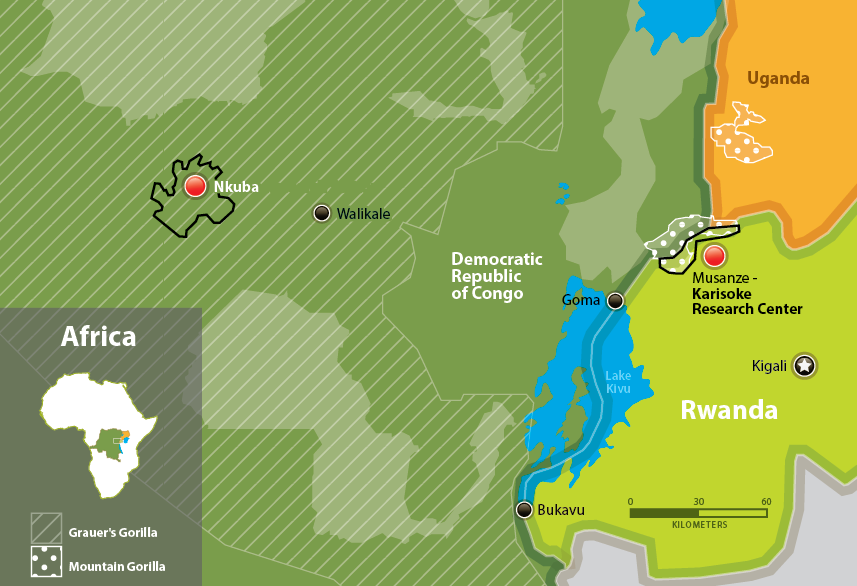Yes, we will soon work for the renowned Dian Fossey Gorilla Fund. We are so excited to work for a leading institution in the conservation and the study of gorillas and their habitats in Rwanda and Congo. The organization uses an interesting approach based on the collaboration with local governments and communities to protect gorillas.
A few years ago, the Dian Fossey Fund started a project in the Nkuba forests of the Democratic Republic of Congo. Like most of their projects, this one is in partnership with the local communities that own the area. The goal of the Nkuba project is to protect the forests and their gorillas as well as improve the lives of local people. Many villagers now work for the foundation as rangers, preventing poaching and collecting scientific data in the forest.
And this is where Frederik and I come in. Using our expertise in scientific data collection in tropical forests (in Congo for Frederik and in Bolivia for myself), we will help increasing the amount and quality of the data collected by field staff. To do that, we will design and implement long-term, consistent data collection strategies needed to better understand how to conserve biodiversity in Nkuba. Eventually, Nkuba may become one of the key bases to study Grauer’s gorillas in the wild!

We wished to work in the wilderness, and so we will: Nkuba is located in the heart of the Congolese tropical lowland rainforest. It is so remote that it will take us a few hours to reach our new base from the main city of Goma. The area is crucial for the protection of the Grauer’s Gorilla. There are two species of gorillas in the world, divided into four subspecies. All live in Africa and are critically endangered.
The two subspecies of Western gorillas, the Cross River Gorilla (Gorilla gorilla diehli) and the Western Lowland Gorilla (Gorilla gorilla gorilla), occur in the North-Western part of the Congo Basin. Both species of Eastern gorillas, the Mountain Gorilla (Gorilla beringei beringei) and the Grauer’s Gorilla (Gorilla beringei graueri), are found on the Eastern border of the Congo Basin. All gorillas live in forests and feed mainly on plants.
The Grauer’s gorillas, also known as the eastern lowland gorillas, are the largest of all gorillas. They only occur in the lowland rainforests of eastern Congo, like those of Nkuba, and is thus the species we will soon study. So far, most research on Eastern gorillas has focused on mountain gorillas of Rwanda and Congo. Mountain and lowland forests are very different, which means that mountain and Grauer’s gorillas probably have different characteristics. There is thus much we still have to learn about them! We are so proud to get a chance to contribute to studying them and, ultimately, contribute to their protection.

One of my new roles at the Dian Fossey Fund will be to communicate about the work of @gorillafund in Nkuba. Of course, I will also share updates on the blog, our Facebook, Twitter and Instagram accounts, so stay tuned to get weekly updates of our life in Nkuba!
Click here to know more about the work of the Dian Fossey Gorilla Fund in Congo and especially in the Nkuba conservation area.


YEAAAAAAAHHHHHHH!!!!!!!